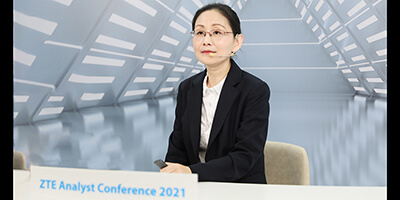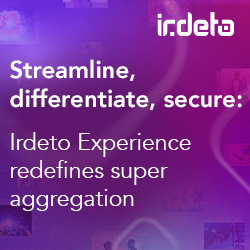5G, in many ways, is still in its infancy. The good news is that it is growing and evolving quickly. Much has been said (and written) about the theoretical benefits of 5G: High speeds, low latency and massive connection density. But, not many organisations understand what 5G actually means for their industry environments. Many organisations—while intrigued by the possibilities of incorporating 5G into their operational and customer-facing processes—often lack the resources to experiment and invest in a long-drawn cycle of "unproven" innovation.
Featured Articles
6 GHz band partitioning to power digital economies in the Asia Pacific
In an exclusive interview with Telecom Review Asia Pacific, Scott Minehane, managing director of Windsor Place Consulting Pty Ltd, delves into the importance of allocating mid-band spectrum for licensed and unlicensed use in Asia Pacific.
Cultivating innovative talent ecosystem for APAC digital future
By Jeffery Liu, president of Huawei Asia Pacific
Throughout my life, I’ve stood in awe of the transformative powers of technology, taking childhood dreams of wireless video communication, a world of robotics, and even flying cars and making them a reality. Never have we lived in a time with such an incredible acceleration in shared technical knowledge with the tools to truly conquer so many geographical, language, and knowledge barriers.
5G innovations and policy-making key to digital evolution in the Asia Pacific
In conjunction with Huawei’s 12th Global Mobile Broadband Forum (MBBF), Telecom Review Asia Pacific interviews Daisy Zhu, vice president of Huawei Wireless Marketing to learn about the direction of 5G evolution and key trends that shape the development of the wireless industry in the Asia Pacific region.
Zero-footprint and high-capability 5G edge infrastructure for industries
Telecom Review Asia Pacific interviews Dr. Han Gang, deputy general manager of RAN market, ZTE. Dr. Han is focused on developing RAN solutions and strategies. He is also responsible for ZTE’s RAN industry partnership programs and ZTE’s international markets.
How the telecommunications industry is on the cusp of a green, sustainable revolution
By Benson Yeo, senior vice president, IDEMIA Mobile Operations Business, APAC
ZTE zero carbon energy network helps operators achieve carbon neutrality
Carbon neutrality has become the most urgent and critical mission in the world. Currently, it has been proposed as a target in over 120 countries and regions. The ICT industry is the main force in global economic development. With the large-scale commercial use of 5G, carbon emissions have become a serious challenge to the development of the industry. Building zero carbon networks and achieving carbon neutrality are the strategic objectives of major operators and Internet giants. The ICT industry should not only achieve its own carbon neutrality, but should also empower thousands of industries and promote the carbon neutrality process of them. According to the ITU statistics, in 2020, the ICT industry technology empowers various industries to reduce about 7.8 G tons of equivalent carbon dioxide emissions, accounting for 15% of the total annual emissions. It could be said that the ICT industry contributes greatly to the social carbon emission reduction.
Future-proofing the backbone of our digital economy
By Rick Seeto, vice president & general manager APJ, Ciena
Telco digital transformation to seize new market growths
In conjunction with ZTE’s Analyst Conference 2021, Telecom Review Asia Pacific speaks with Cui Li, chief development officer, ZTE in an exclusive interview to learn how telcos can innovate, transform, and raise competitiveness in the digital economy.
Growing importance of digital identity verification in the telecom industry
The world is experiencing quantum leaps in digitalization, as technology is embraced in ways never before prior to the pandemic. At the same time, digital fraud poses a bigger threat as digital transaction volumes increase, with annual losses amounting to $10.5 trillion by 2025 globally. With further developments in technology, we can only expect greater risks to data privacy and security and growing pressure for enterprises and industries to ensure compliance.


















